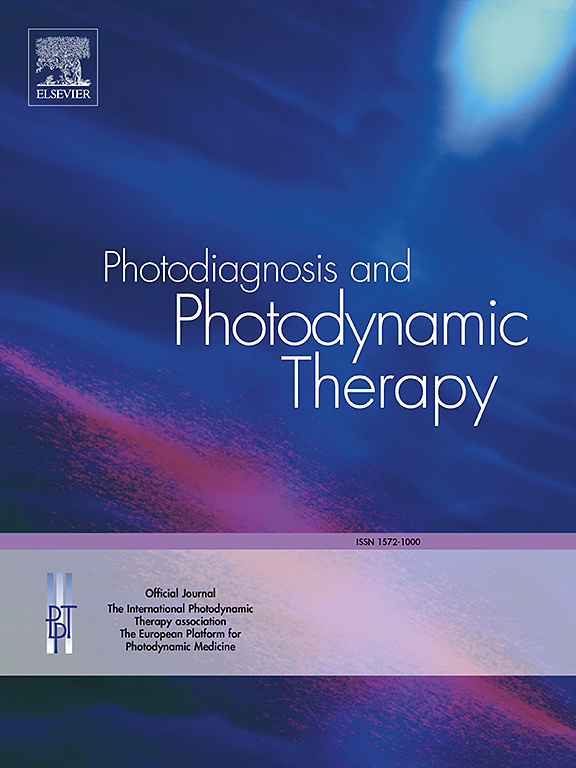Predicting plaque regression based on plaque characteristics identified by optical coherence tomography: A retrospective study
IF 3.1
3区 医学
Q2 ONCOLOGY
引用次数: 0
Abstract
Background
Atherosclerosis is a lipid-driven, systemic immune-inflammatory disease characterized by the accumulation of plaque within the arterial walls. Plaque regression can occur following appropriate treatment interventions. Optical coherence tomography (OCT), a high-resolution imaging modality, is frequently employed to assess plaque morphology. This study aims to explore the correlation between plaque characteristics identified using OCT, particularly macrophage infiltration, and subsequent plaque regression.
Methods
In this retrospective study, data from 112 individuals with coronary artery plaques, who underwent OCT imaging at our hospital, between June 2019 and June 2024, were evaluated. Plaques were classified as lipid-rich, fibrous, or calcified based on the initial OCT findings. Macrophage infiltration levels within each plaque type were quantified. After one year of follow-up, repeat OCT imaging was performed to evaluate plaque regression. Statistical analyses were conducted to assess the relationship between initial plaque characteristics and regression outcomes.
Results
Plaques that underwent regression were more commonly lipid-rich and exhibited higher levels of macrophage infiltration compared to those without regression. Multivariate analysis identified the histological inflammation score (HIS) as an independent factor influencing plaque regression.
Conclusion
Macrophage-rich plaques, as detected by OCT, are significant predictors of plaque regression. The identification of vulnerable plaque features through OCT can enhance the early diagnosis and treatment strategies for atherosclerotic cardiovascular disease.
基于光学相干断层扫描识别的斑块特征预测斑块消退:一项回顾性研究。
背景:动脉粥样硬化是一种脂质驱动的全身性免疫炎性疾病,其特征是动脉壁内斑块的积累。在适当的治疗干预后,可发生斑块消退。光学相干断层扫描(OCT)是一种高分辨率成像方式,经常用于评估斑块形态。本研究旨在探讨利用OCT识别的斑块特征,特别是巨噬细胞浸润与随后的斑块消退之间的相关性。方法:在这项回顾性研究中,对2019年6月至2024年6月期间在我院接受OCT成像的112例冠状动脉斑块患者的数据进行评估。根据最初的OCT表现,斑块分为富含脂质、纤维状或钙化。量化各斑块类型内巨噬细胞浸润水平。随访1年后,进行重复OCT成像以评估斑块消退。进行统计分析以评估初始斑块特征与回归结果之间的关系。结果:与未消退的斑块相比,经历消退的斑块更常见地富含脂质,并表现出更高水平的巨噬细胞浸润。多因素分析发现组织学炎症评分(HIS)是影响斑块消退的独立因素。结论:通过OCT检测到的富含巨噬细胞的斑块是斑块消退的重要预测因子。通过OCT识别易损斑块特征可以提高动脉粥样硬化性心血管疾病的早期诊断和治疗策略。
本文章由计算机程序翻译,如有差异,请以英文原文为准。
求助全文
约1分钟内获得全文
求助全文
来源期刊

Photodiagnosis and Photodynamic Therapy
ONCOLOGY-
CiteScore
5.80
自引率
24.20%
发文量
509
审稿时长
50 days
期刊介绍:
Photodiagnosis and Photodynamic Therapy is an international journal for the dissemination of scientific knowledge and clinical developments of Photodiagnosis and Photodynamic Therapy in all medical specialties. The journal publishes original articles, review articles, case presentations, "how-to-do-it" articles, Letters to the Editor, short communications and relevant images with short descriptions. All submitted material is subject to a strict peer-review process.
 求助内容:
求助内容: 应助结果提醒方式:
应助结果提醒方式:


